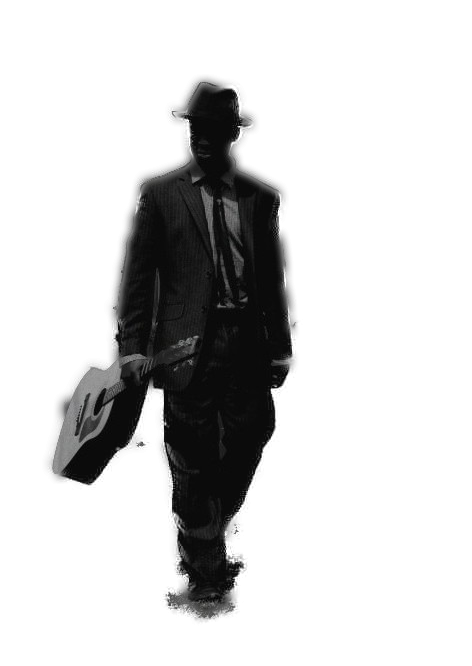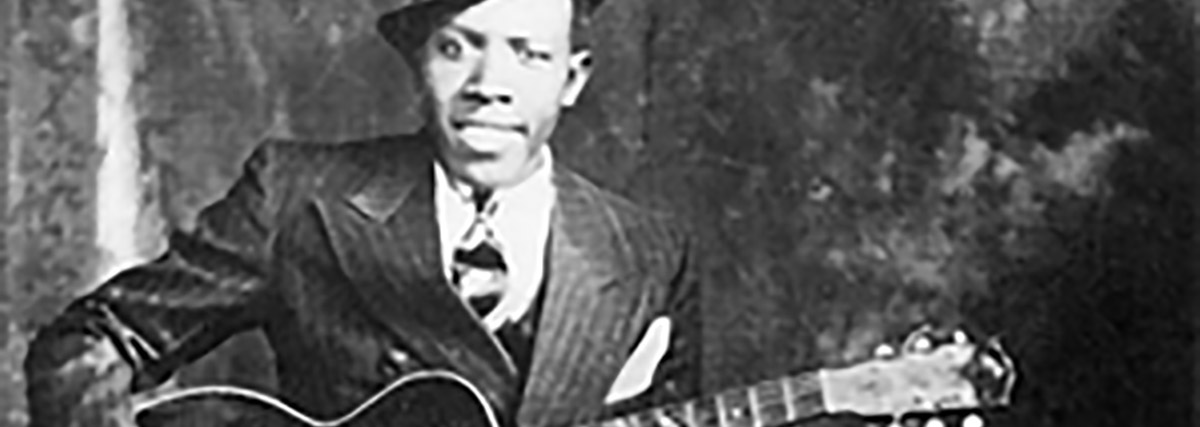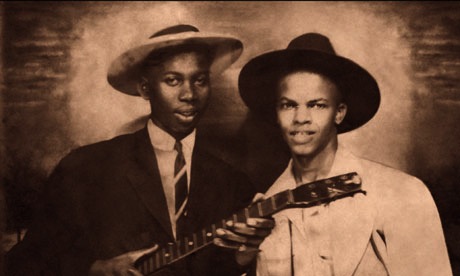Voice
An important aspect of Robert Johnson's singing was his use of microtonality. These subtle inflections of pitch help explain why his singing conveys such powerful emotion. Eric Clapton described Johnson's music as "the most powerful cry that I think you can find in the human voice". In two takes of "Me and the Devil Blues" he shows a high degree of precision in the complex vocal delivery of the last verse: "The range of tone he can pack into a few lines is astonishing." The song's "hip humor and sophistication" is often overlooked. "Generations of blues writers in search of wild Delta primitivism", wrote Wald, have been inclined to overlook or undervalue aspects that show Johnson as a polished professional performer.
Robert Johnson is also known for using the guitar as "the other vocalist in the song", a technique later perfected by B.B. King and his personified guitar named Lucille: "In Africa and in Afro-American tradition, there is the tradition of the talking instrument, beginning with the drums ... the one-strand and then the six-strings with bottleneck-style performance; it becomes a competing voice ... or a complementary voice ... in the performance."
Instrument
Robert Johnson mastered the guitar, being considered today one of the all-time greats on the instrument. His approach was complex and musically advanced. When Keith Richards was first introduced to Robert Johnson's music by his bandmate Brian Jones, he asked, "Who is the other guy playing with him?", not realizing it was Johnson playing one guitar.
"I was hearing two guitars, and it took a long time to actually realise he was doing it all by himself", said Keith Richards, who later stated that "Robert Johnson was like an orchestra all by himself". "As for his guitar technique, it's politely reedy but ambitiously eclectic—moving effortlessly from hen-picking and bottleneck slides to a full deck of chucka-chucka rhythm figures."
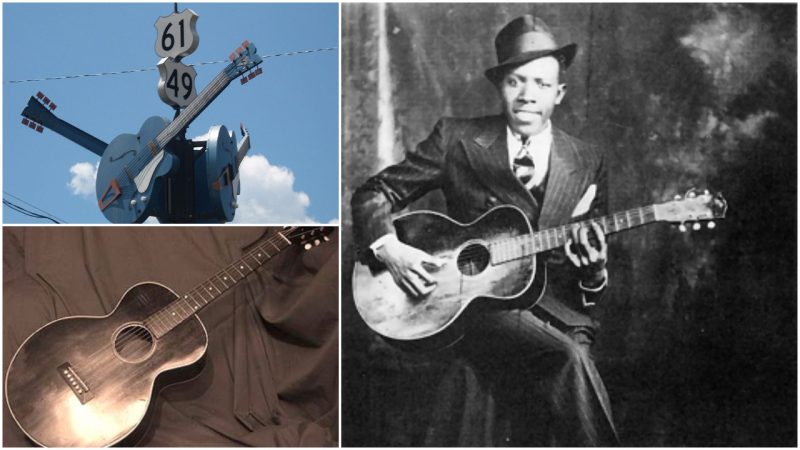
Lyrics
In The Story with Dick Gordon, Bill Ferris, of American Public Media, said, "Robert Johnson I think of in the same way I think of the British Romantic poets, Keats and Shelley, who burned out early, who were geniuses at wordsmithing poetry ... The Blues, if anything, are deeply sexual. You know, 'my car doesn't run, I'm gonna check my oil ... 'if you don't like my apples, don't shake my tree'. Every verse has sexuality associated with it."

Influences
Robert Johnson fused approaches specific to Delta blues to those from the broader music world. The slide guitar work on "Ramblin' on My Mind" is pure Delta and Johnson's vocal there has "a touch of ... Son House rawness", but the train imitation on the bridge is not at all typical of Delta blues—it is more like something out of minstrel show music or Vaudeville
Johnson did record versions of "Preaching the Blues" and "Walking Blues" in the older bluesman's vocal and guitar style (House's chronology has been questioned by Guralnick). As with the first take of "Come On in My Kitchen", the influence of Skip James is evident in James's Devil Got My Woman, but the lyrics rise to the level of first-rate poetry, and Johnson sings with a strained voice found nowhere else in his recorded output.
The sad, romantic "Love in Vain" successfully blends several of Johnson's disparate influences. The form, including the wordless last verse, follows Leroy Carr's last hit "When the Sun Goes Down"; the words of the last sung verse come directly from a song Blind Lemon Jefferson recorded in 1926. Johnson's last recording, "Milkcow's Calf Blues" is his most direct tribute to Kokomo Arnold, who wrote "Milkcow Blues" and influenced Johnson's vocal style.
"From Four Until Late" shows Johnson's mastery of a blues style not usually associated with the Delta. He croons the lyrics in a manner reminiscent of Lonnie Johnson, and his guitar style is more that of a Ragtime-influenced player like Blind Blake.
Lonnie Johnson's influence is even clearer in two other departures from the usual Delta style: "Malted Milk" and "Drunken Hearted Man". Both copy the arrangement of Lonnie Johnson's "Life Saver Blues". The two takes of "Me and the Devil Blues" show the influence of Peetie Wheatstraw, calling into question the interpretation of this piece as "the spontaneous heart-cry of a demon-driven folk artist".
Legacy - Early recognition and reviews
Famed producer John Hammond was an early advocate of Robert Johnson's music. Using the pen-name Henry Johnson, he wrote his first article on Robert Johnson for the New Masses magazine in March 1937, around the time of the release of Johnson's first record. In it, he described Johnson as "the greatest Negro blues singer who has cropped up in recent years ... Johnson makes Lead Belly sound like an accomplished poseur." The following year, Hammond hoped to get Johnson to perform at a December 1938 From Spirituals to Swing concert in New York City, as he was unaware that Johnson had died in August. Instead, Hammond played two of his recordings, "Walkin' Blues" and "Preachin' Blues (Up Jumped the Devil)", for the audience and "praised Johnson lavishly from the stage". Music historian Ted Gioia noted "Here, if only through the medium of recordings, Hammond used his considerable influence at this historic event to advocate a position of preeminence for the late Delta bluesman". Music educator James Perone also saw that the event "underscored Robert Johnson's specific importance as a recording artist". In 1939, Columbia issued a final single, pairing "Preachin' Blues" with "Love in Vain".
In 1940, nine of Johnson's songs were included on a "List of American Folk Songs on Commercial Records" prepared by musicologist Alan Lomax for a U.S. government conference. Lomax's notations for the entries range from "elaborate sex symbolism" ("Terraplane Blues"), "very nice love song" ("I'm a Steady Rollin' Man"), to "traces of voodoo" ("Stones in My Passway", "Hellhound on My Trail", "Cross Road Blues"). In 1942, commentary on Johnson's "Terraplane Blues" and "Last Fair Deal Gone Down" appeared in The Jazz Record Book, edited by Charles Edward Smith. The authors described Johnson's vocals as "imaginative" and "thrilling" and his guitar playing as "exciting as almost anything in the folk blues field". Music writer Rudi Blesh included a review of Johnson's "Hellhound on My Trail" in his 1946 book Shining Trumpets: a History of Jazz. He noted the "personal and creative way" Johnson approached the song's harmony. Jim Wilson, then a writer for the Detroit Free Press, also mentioned his unconventional use of harmony. In a 1949 review, he compared elements of John Lee Hooker's recent debut "Boogie Chillen": "His [Hooker's] dynamic rhythms and subtle nuances on the guitar and his startling disregard for familiar scale and harmony patterns show similarity to the work of Robert Johnson, who made many fine records in this vein."
Samuel Charters drew further attention to Robert Johnson in a five-page section in his 1959 book, The Country Blues. He focused on the two Johnson recordings that referred to images of the devil or hell – "Hellhound on My Trail" and "Me and the Devil Blues" – to suggest that Johnson was a deeply troubled individual. Charters also included Johnson's "Preachin' Blues" on the album published alongside his book. Columbia Records' first album of Johnson's recordings, King of the Delta Blues Singers, was issued two years later.
Musicianship
Robert Johnson is mentioned as one of the Delta artists who was a strong influence on blues singers in post-war styles. However, it is Robert Johnson's guitar technique that is often identified as his greatest contribution. Blues historian Edward Komara wrote:
"The execution of a driving bass beat on a plectrum instrument like the guitar (instead of the piano) is Robert Johnson's most influential accomplishment ... This is the aspect of his music that most changed the Delta blues practice and is most retained in the blues guitar tradition."
This technique has been called a "boogie bass pattern" or "boogie shuffle" and is described as a "fifth–sixth [degrees of a major scale] oscillation above the root chord". Sometimes, it has been attributed to Johnnie Temple, because he was the first to record a song in 1935 using it. However, Temple confirmed that he had learned the technique from Johnson:
"He was the first one I ever heard use it ... It was similar to a piano boogie bass [which] I learned from R. L. [Johnson] in '32 or '33." Johnny Shines added:
"Some of the things that Robert did with the guitar affected the way everybody played. In the early thirties, boogie was rare on the guitar, something to be heard." Conforth and Wardlow call it "one of the most important riffs in blues music"
and music historian Peter Guralnick believes Johnson "popularized a mode [walking bass style on guitar] which would rapidly become the accepted pattern". Although author Elijah Wald recognizes Johnson's contribution in popularizing the innovation, he discounts its importance and adds,
"As far as the evolution of black music goes, Robert Johnson was an extremely minor figure, and very little that happened in the decades following his death would have been affected if he had never played a note".
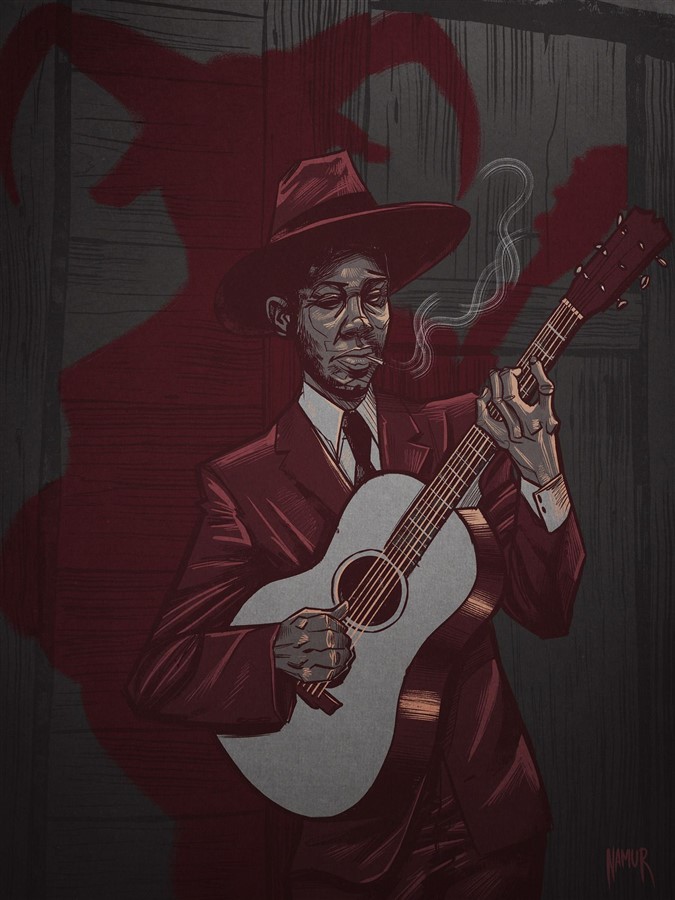
Contemporaries
Robert Johnson's contemporaries, including Johnny Shines, Johnnie Temple, Henry Townsend, Robert Lockwood Jr., Calvin Frazier, and David "Honeyboy" Edwards were among those who kept his music alive through performing his songs and using his guitar techniques. Fellow Mississippi native Elmore James is the best known and is responsible for popularizing Robert Johnson's "Dust My Broom". In 1951, he recast the song as a Chicago-style blues, with electric slide guitar and a backing band. According to blues historian Gerard Herhaft:
"Johnson's influence upon Elmore James's music always remained powerful: his falsetto voice, almost shrill, and the intensive use of the "walking" bass notes of the boogie-woogie, several pieces of James' repertoire were borrowed from Johnson (e.g, "Dust My Broom", "Rambling on My Mind", and "Crossroads").
Elmore James' version is identified as "one of the first recorded examples of what was to become the classic Chicago shuffle beat". The style often associated with Chicago blues was used extensively by Jimmy Reed beginning with his first record "High and Lonesome" in 1953. Sometimes called "the trademark Reed shuffle" (although also associated his second guitarist, Eddie Taylor), it is the figure Johnson used updated for electric guitar.
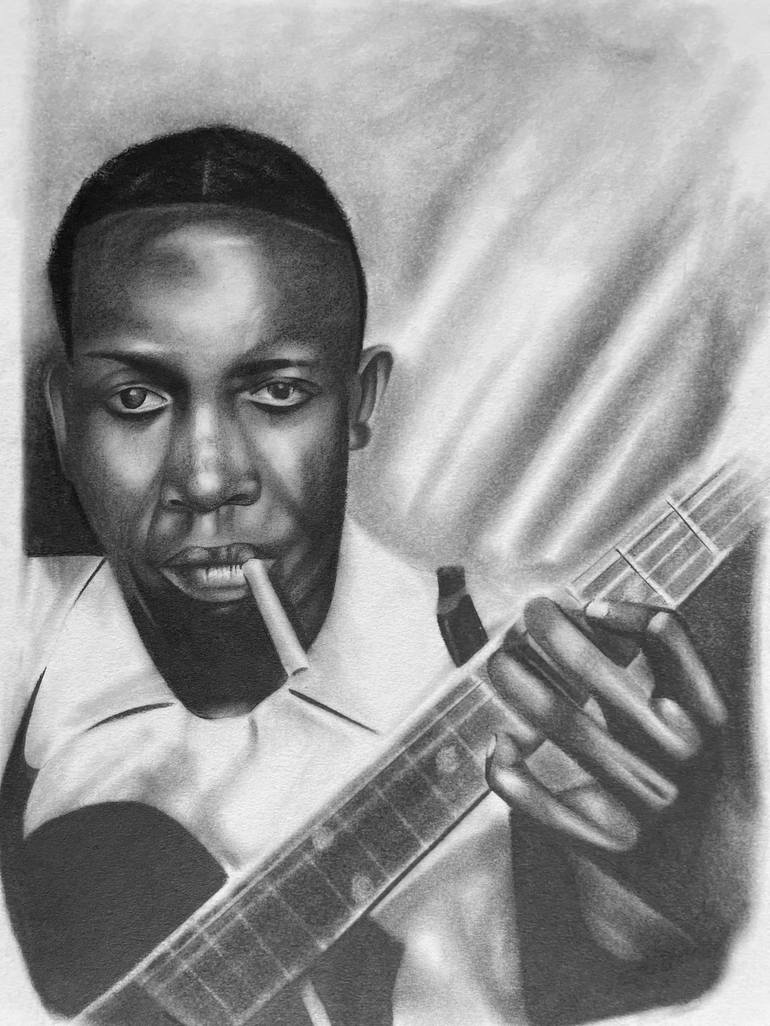
Blues standards
Several of Johnson's songs became blues standards, which is used to describe blues songs that have been widely performed and recorded over a period of time and are seen as having a lasting quality. Perone notes "That such a relatively high percentage of the songs attributed to him became blues standards also keeps the legacy of Robert Johnson alive."
Those most often identified are "Sweet Home Chicago" and "Dust My Broom", but also include "Crossroads" and "Stop Breaking Down". As with many blues songs, there are melodic and lyrical precedents. While "Sweet Home Chicago" borrows from Kokomo Arnold's 1933 "Old Original Kokomo Blues", "Johnson's lyrics made the song a natural for Chicago bluesmen, and it's his version that survived in the repertoires of performers like Magic Sam, Robert Lockwood, and Junior Parker".
In the first decades after Johnsons' death, these songs, with some variations in the titles and lyrics, were recorded by Tommy McClennan (1939), Walter Davis (1941), Sonny Boy Williamson I (1945), Arthur Crudup (1949), Texas Alexander (1950), Elmore James (1951–1959), Baby Boy Warren (1954), Roosevelt Sykes (1955), Junior Parker (1958), and Forest City Joe (1959).
Pearson and McCulloch believe that "Sweet Home Chicago" and "Dust My Broom" in particular connect Johnson to "the rightful inheritors of his musical ideas—big-city African American artists whose high-powered, electrically amplified blues remain solidly in touch with Johnson's musical legacy" at the time of Columbia's first release of a full album of his songs in 1961.
In Jim O'Neal's statement when Johnson was inducted into the Blues Foundation Blues Hall of Fame, he identified "Hell Hound on My Trail", "Sweet Home Chicago", "Dust My Broom", "Love in Vain", and "Crossroads" as Johnson's classic recordings. Over the years, these songs have been individually inducted into the Blues Hall's "Classic of Blues Recording – Single or Album Track" category, as well as "Come On in My Kitchen" and "Terraplane Blues".
Rock music
In the mid-1950s, Rock and roll pioneer Chuck Berry adapted the boogie pattern on guitar for his songs "Roll Over Beethoven" and "Johnny B. Goode". Author Dave Rubin commented:
"His [Berry's] utilization of the bass-string cut-boogie patterns popularized by Robert Johnson on songs like "Sweet Home Chicago" ... subtly altered the swing feel of the boogie blues into a more driving, straight 4/4 meter while still maintaining a limber lilt that is often missing in the countless imitations that followed."
The pattern "became one of the signature figures in early electric guitar-based rock and roll, such as that of Chuck Berry and the numerous rock musicians of the 1960s who were influenced by Berry", according to Perone. Although music historian Larry Birnbaum also sees the connection, he wrote that Johnson's "contributions to the origins of rock 'n' roll are negligible". The Rock and Roll Hall of Fame inducted Johnson as an early influence in its first induction ceremony, in 1986, almost a half century after his death. It also included four of his songs it deemed to have shaped the genre: "Sweet Home Chicago", "Cross Road Blues", "Hellhound on My Trail", and "Love in Vain". Marc Meyers, of the Wall Street Journal, commented, "His 'Stop Breakin' Down Blues' from 1937 is so far ahead of its time that the song could easily have been a rock demo cut in 1954."
Several rock artists describe Robert Johnson as an influence:
Eric Clapton – "Robert Johnson to me is the most important blues musician who ever lived". He recorded several of Johnson's songs as well as an entire tribute album, Me and Mr. Johnson (2004). Clapton feels that rather than trying to recreate Johnson's originals, "I was trying to extract as much emotional content from it as I could, while respecting the form at the same time."
Bob Dylan – "In about 1964 and '65, I probably used about five or six of Robert Johnson's blues song forms, too, unconsciously, but more on the lyrical imagery side of things. If I hadn't heard the Robert Johnson record when I did, there probably would have been hundreds of lines of mine that would have been shut down—that I wouldn't have felt free enough or upraised enough to write. [His] code of language was like nothing I'd heard before or since."
Robert Plant – "A lot of English musicians were very fired up by Robert Johnson [to] whom we all owe more or less our existence, I guess, in some way". Led Zeppelin recorded "Traveling Riverside Blues" and quoted some of Johnson's lyrics in "The Lemon Song".
Keith Richards – "I've never heard anybody before or since use the [blues] form and bend it so much to make it work for himself ... he came out with such compelling themes [and] just the way they were treated, apart from the music and the performance, [was appealing]." The Rolling Stones recorded "Love in Vain" and "Stop Breaking Down".
Johnny Winter – "Robert Johnson knocked me out—he was a genius. [He and Son House] both were big influences on my acoustic slide playing." He recorded "Dust My Broom" with additional guitar by Derek Trucks.
Jimmy Page—Whilst Robert Johnson is not the principal figure who influenced Led Zeppelin’s guitar hero, Jimmy Page, he is certainly one of the main ones. Page’s work, be it in Led Zeppelin, The Yardbirds or otherwise, has always had one finger on the blues, which in turn inspired many of the band’s fans to immerse themselves in the worlds of figures such as Robert Johnson.
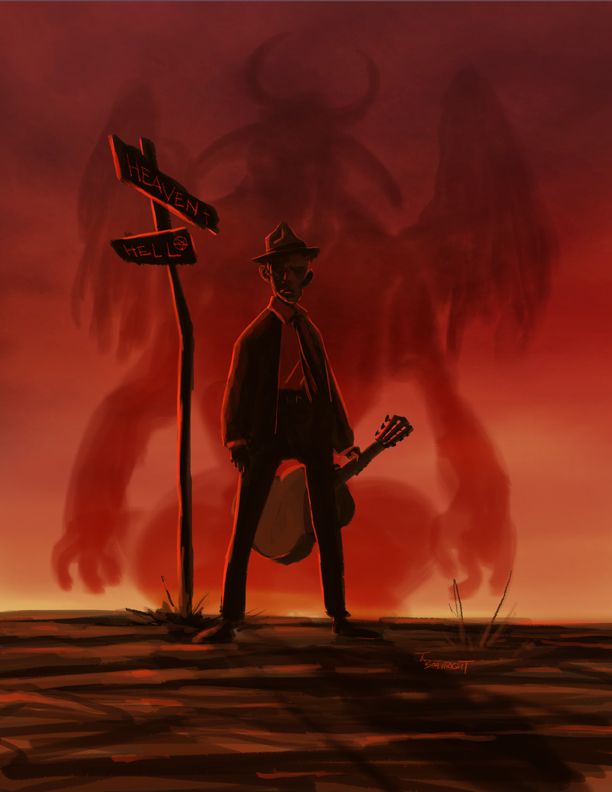
Whether it be the fact that Led Zeppelin’s ‘Trampled Under Foot’ was partially inspired by Johnson’s "Terraplane Blues" or the that Jimmy Page and Robert Plant once covered "Crossroads" on Top of the Pops, the impact Johnson had on Page is clear.
Peter Green—Fleetwood Mac founding member Peter Green is one of the all-time British blues greats. Inspired as much by Robert Johnson as he was by the likes of B.B. King and Muddy Waters, it was the feeling and attitude that Green imbued in his playing that can be attributed to the influence of the ‘Crossroads’ mastermind. Indicating just how indebted to Johnson Peter Green was, in 1998, he and The Peter Green Splinter Group released The Robert Johnson Songbook, which consists of solely Robert Johnson’s compositions.
Jack White—Jack White needs no real introduction. The creative driving force behind The White Stripes and head honcho of Third Man Records, he is one of the 21 Century’s definitive guitarists giving us stellar cuts that range from "Hotel Yorba" to "Icky Thump". He’s a dab hand on the six-string and is by far the youngest disciple of Robert Johnson on the list. Asked by Rolling Stone in 2003 about when he discovered the blues, White said: “I didn’t get into it deep until around eighteen. I dabbled in things like Howlin’ Wolf, Cream and Led Zeppelin, but when I heard Son House and Robert Johnson, it blew my mind. It was something I’d been missing my whole life. That music made me discard everything else and just get down to the soul and honesty of the blues.”
Source: Farout Magazine (Jimmi Page, Peter Green, Jack White)
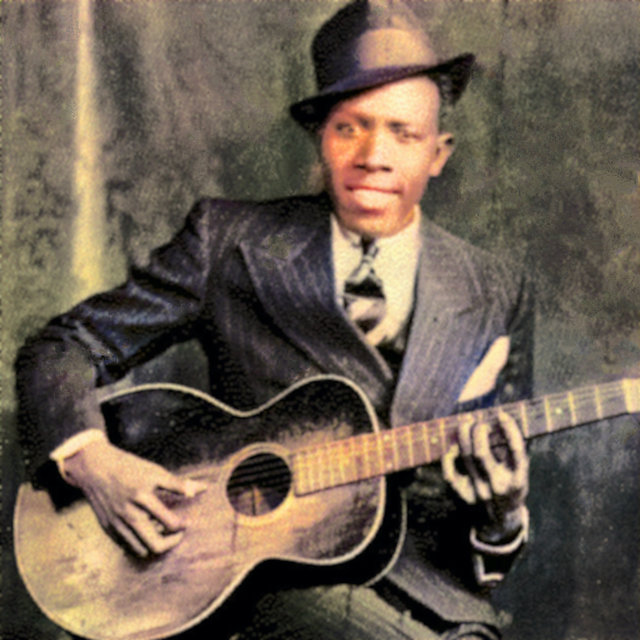
Problems of biography
Until the 2019 publication of Bruce Conforth and Gayle Dean Wardlow's biography, Up Jumped the Devil: The Real Life of Robert Johnson, little of Johnson's early life was known. Two marriage licenses for Robert Johnson have been located in county records offices. The ages given in these certificates point to different birth dates, but Conforth and Wardlow suggest that Johnson lied about his age in order to obtain a marriage license. Carrie Thompson claimed that her mother, who was also Robert's mother, remembered his birth date as May 8, 1911. He was not listed among his mother's children in the 1910 census giving further credence to a 1911 birthdate. Although the 1920 census gives his age as 7, suggesting he was born in 1912 or 1913, the entry showing his attendance at Indian Creek School, in Tunica, Mississippi listed him as being 14 years old.
Five significant dates from his career are documented: Monday, Thursday and Friday, November 23, 26, and 27, 1936, at a recording session in San Antonio, Texas; and Saturday and Sunday, June 19 and 20, 1937, at a recording session in Dallas. His death certificate, discovered in 1968, lists the date and location of his death.
Robert Johnson's records were admired by record collectors from the time of their first release, and efforts were made to discover his biography, with virtually no success. A relatively full account of Johnson's brief musical career emerged in the 1960s, largely from accounts by Son House, Johnny Shines, David Honeyboy Edwards and Robert Lockwood. In 1961, the sleeve notes to the album King of the Delta Blues Singers included reminiscences of Don Law who had recorded Johnson in 1936. Law added to the mystique surrounding Johnson, representing him as very young and extraordinarily shy.
The blues researcher Mack McCormick began researching Johnson's family background in 1972, but died in 2015 without publishing his findings. McCormick's research eventually became as much a legend as Johnson himself. In 1982, McCormick permitted Peter Guralnick to publish a summary in Living Blues Magazine (1982), later reprinted in book form as Searching for Robert Johnson. Later research has sought to confirm this account or to add minor details. A revised summary acknowledging major informants was written by Stephen LaVere for the booklet accompanying Robert Johnson, The Complete Recordings box set (1990).
The documentary film The Search for Robert Johnson contains accounts by McCormick and Wardlow of what informants have told them: long interviews of David "Honeyboy" Edwards and Johnny Shines and short interviews of surviving friends and family. Another film, Can't You Hear the Wind Howl?: The Life & Music of Robert Johnson, combines documentary segments with recreated scenes featuring Keb' Mo' as Johnson with narration by Danny Glover. Shines, Edwards and Robert Lockwood contribute interviews. These published biographical sketches achieve coherent narratives, partly by ignoring reminiscences and hearsay accounts which contradict or conflict with other accounts.
Photographs
Until the 1980s, it was believed that no images of Johnson had survived. However, three images of Johnson were located in 1972 and 1973, in the possession of his half-sister Carrie Thompson. Two of these, known as the "dime-store photo" (December 1937 or January 1938) and the "studio portrait" (summer 1936), were copyrighted by Stephen LaVere (who had obtained them from the Thompson family) in 1986 and 1989, respectively, with an agreement to share any ensuing royalties 50% with the Johnson estate, at that time administered by Thompson.
The "dime-store photo" was first published, almost in passing, in an issue of Rolling Stone magazine in 1986, and the studio portrait in a 1989 article by Stephen Calt and Gayle Dean Wardlow in 78 Quarterly. Both were subsequently featured prominently in the printed materials associated with the 1990 CBS box set of the "complete" Johnson recordings, as well as being widely republished since that time. Because Mississippi courts in 1998 determined that Robert Johnson's heir was Claud Johnson, a son born out of wedlock,

the "estate share" of all monies paid to LaVere by CBS and others ended up going to Claud Johnson, and attempts by the heirs of Carrie Thompson to obtain a ruling that the photographs were her personal property and not part of the estate were dismissed. In his book Searching for Robert Johnson, Peter Guralnick stated that the blues archivist Mack McCormick showed him a photograph of Robert Johnson with his nephew Louis, taken at the same time as the famous "pinstripe suit" photograph, showing Louis dressed in his United States Navy uniform; this picture, along with the "studio portrait", were both lent by Carrie Thompson to McCormick in 1972.
McCormick never returned the photograph of Johnson in his uniform, keeping it in his archive until his death. McCormick's daughter donated the archive to the Smithsonian Institution in 2020 and encouraged museum staff to facilitate the return of the photograph to Johnson's descendants; as of 2023, The Washington Post reported that the museum had agreed to return the photograph and was awaiting instructions from the Johnson family. This photograph has never been made public.
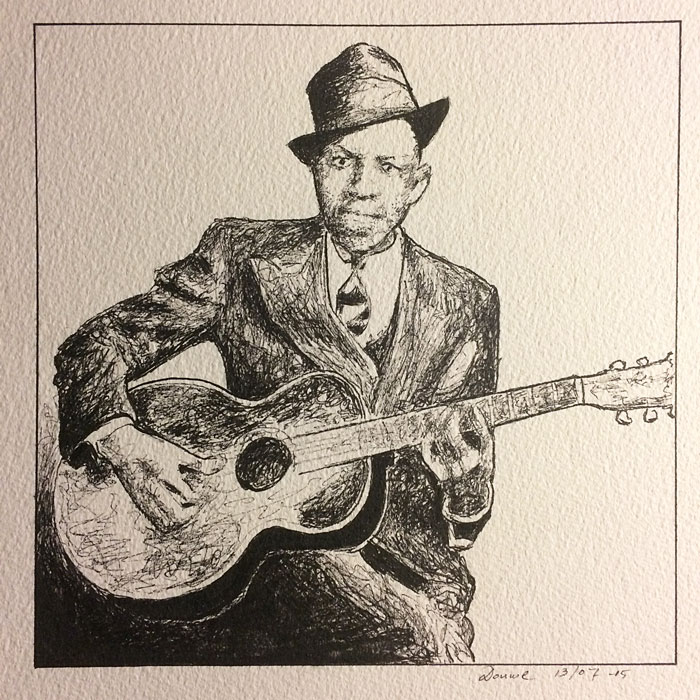
Another photograph, purporting to show Robert Johnson posing with the blues musician Johnny Shines, was published in the November 2008 issue of Vanity Fair magazine. Its authenticity was claimed by the forensic artist Lois Gibson and by Johnson's estate in 2013, but has been disputed by some music historians, including Elijah Wald, Bruce Conforth and Gayle Dean Wardlow, who considered that the clothing suggests a date after Johnson's death and that the photograph may have been reversed and retouched.
Further, both David "Honeyboy" Edwards and Robert Lockwood failed to identify either man in the photo. Facial recognition software concluded that neither man was Johnson or Shines. Finally, Gibson claimed the photo was from 1933 to 1934 but it is known that Johnson did not meet Shines until early 1937. In December 2015, a fourth photograph was published, purportedly showing Johnson, his wife Calletta Craft, Estella Coleman, and Robert Lockwood Jr. This photograph was also declared authentic by Lois Gibson, but her identification of Johnson has been dismissed by other facial recognition experts and blues historians.
There are a number of reasons why the photograph is unlikely to be Johnson: it has been proven that Craft died before Johnson met Coleman, the clothing could not be prior to the late 1940s, the furniture is from the 1950s, the Coca-Cola bottle cannot be from prior to 1950, etc. A third photograph of Johnson, this time smiling, was published in 2020. It is believed to have been taken in Memphis on the same occasion as the verified photograph of him with a guitar and cigarette (part of the "dime-store" set), and is in the possession of Annye Anderson, Johnson's step-sister (Anderson is the daughter of Charles Dodds, later Spencer, who was married to Robert's mother but was not his father).
As a child, Anderson grew up in the same family as Johnson and has claimed to have been present, aged 10 or 11, on the occasion the photograph was taken. This photograph was published in Vanity Fair in May 2020, as the cover image for a book, Brother Robert: Growing Up with Robert Johnson, written by Anderson in collaboration with author Preston Lauterbach, and is considered to be authentic by Johnson scholar Elijah Wald.
Descendants
Robert Johnson left no will. In 1998, the Mississippi Supreme Court ruled that Claud Johnson, a retired truck driver living in Crystal Springs, Mississippi, was the son of Robert Johnson and his only heir. The court heard that he had been born to Virgie Jane Smith (later Virgie Jane Cain), who had a relationship with Robert Johnson in 1931. The relationship was attested to by a friend, Eula Mae Williams, but other relatives descended from Robert Johnson's half-sister, Carrie Harris Thompson, contested Claud Johnson's claim. The effect of the judgment was to allow Claud Johnson to receive over $1 million in royalties. Claud Johnson died, aged 83, on June 30, 2015, leaving six children.
Discography
Eleven 78-rpm records by Robert Johnson were released by Vocalion Records in 1937 and 1938, with additional pressings by ARC budget labels. In 1939, a twelfth was issued posthumously. Johnson's estate holds the copyrights to his songs. In 1961, Columbia Records released King of the Delta Blues Singers, an album representing the first modern-era release of Johnson's performances, which started the "re-discovery" of Johnson as blues artist.
In 1970, Columbia issued a second volume, King of the Delta Blues Singers, Vol. II. The Complete Recordings, a two-disc set, released on August 28, 1990, contains almost everything Johnson recorded, with all 29 recordings, and 12 alternate takes. Another alternate take of "Traveling Riverside Blues" was released by Sony on the CD reissue of King of the Delta Blues Singers. To celebrate the 100th anniversary of Robert Johnson's birth,
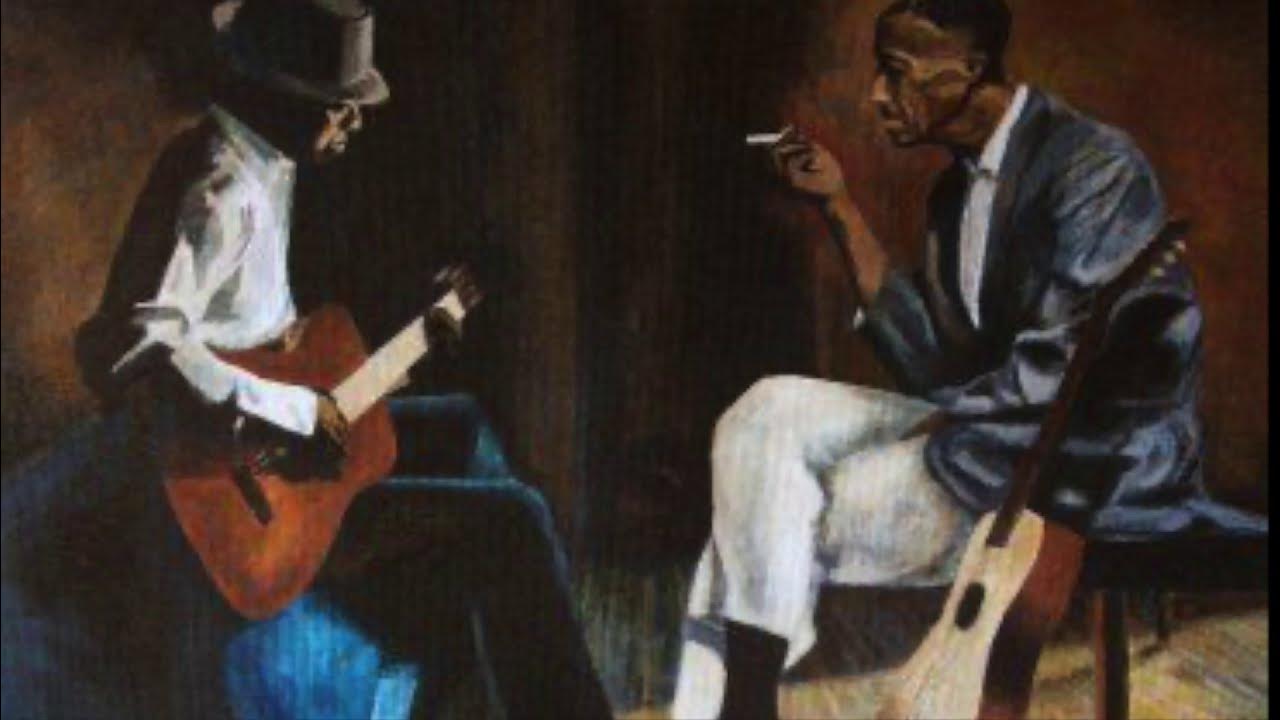
May 8, 2011, Sony Legacy released Robert Johnson: The Centennial Collection, a re-mastered 2-CD set of all 42 of his recordings and two brief fragments, one of Johnson practicing a guitar figure and the other of Johnson saying, presumably to engineer Don Law, "I wanna go on with our next one myself." One reviewer commented that the sound quality of the 2011 release was a slight improvement on the 1990 release.
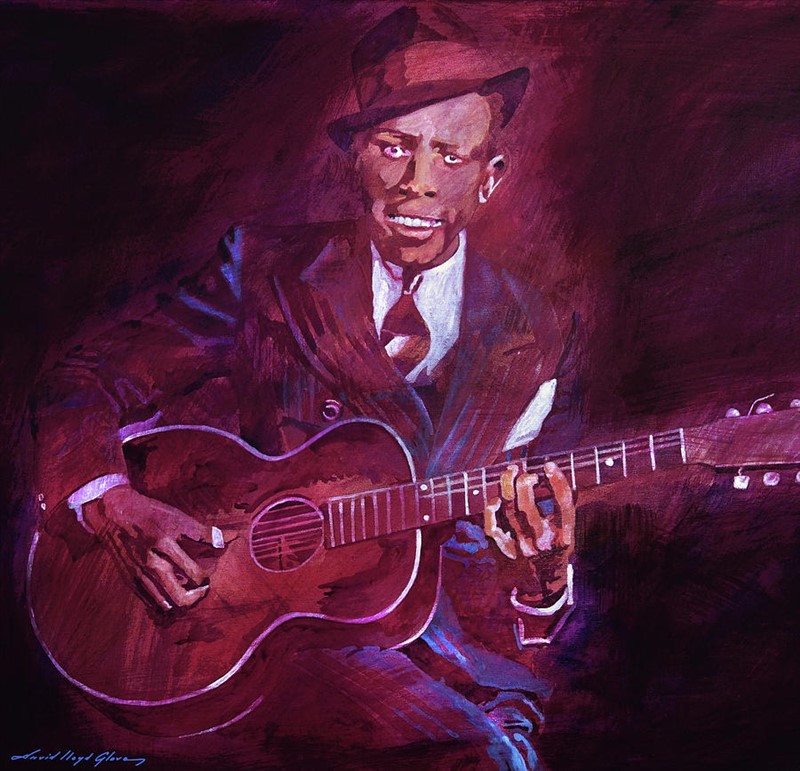
Awards and recognition
1980 – Blues Hall of Fame: performer
1986 – Rock and Roll Hall of Fame: early influence
1990 – Spin magazine: first in its list of "35 Guitar Gods" on the 52nd anniversary of his death
1991 – Grammy Award: best historical album (The Complete Recordings)
1991 – Blues Music Award: reissue album (The Complete Recordings)
1994 – U.S. Postal Service: commemorative stamp
1995 – Rock and Roll Hall of Fame "500 Songs That Shaped Rock and Roll": "Sweet Home Chicago", "Cross Road Blues", "Hellhound on My Trail", "Love in Vain"
1998 – Grammy Hall of Fame: "Cross Road Blues"
2000 – Mississippi Musicians Hall of Fame: Blues pioneer
2003 – National Recording Registry: The Complete Recordings
2003 – Rolling Stone's David Fricke: fifth on his list of "100 Greatest Guitarists of All Time"
2006 – Grammy Lifetime Achievement Award: performer
2008 – Marker No. 29 on the Mississippi Blues Trail at his birthplace in Hazlehurst; also, at his presumed gravesite in Greenwood
2010 – Gibson.com: ninth on its list of "Top 50 Guitarists of All Time"
2014 – Grammy Hall of Fame: "Sweet Home Chicago
2015 – Rolling Stone No. 71 on its list of the "100 Greatest Guitarists of All Time" (down from No. 5 on its 2003 list chosen by David Fricke)
2023 – Ranked number 124 on Rolling Stone′s list of the 200 Greatest Singers of All Time
2023 - Ranked number 16 on Rolling Stone's list of 250 greatest guitarists of all time

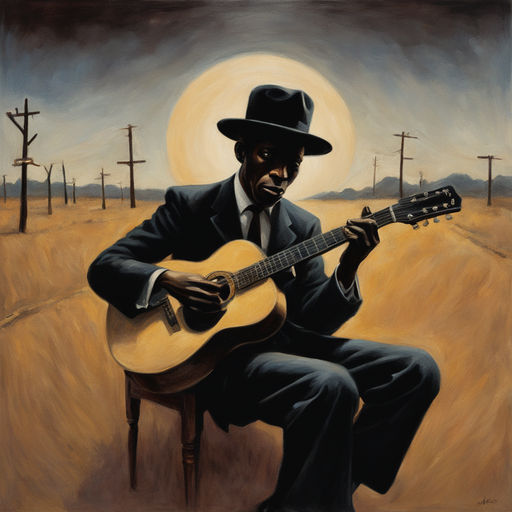
In popular culture
The season 2 episode 6 of the NBC sci-fi time-travel series Timeless, "King of The Delta Blues", is about the heroes travelling back to San Antonio in 1936 when Robert Johnson and Don Law were recording Johnson's first album in a hotel room. The show features quite a bit of Johnson's singing and playing.
The 2nd-season episode 8 of Supernatural featured Robert Johnson, who made a deal with a Crossroads Demon, bargaining his soul in order to gain talent as a famous guitarist. For ten years he lived as a famous musician until the demon sent hellhounds to collect his soul, dying in the process and setting up the rest of the episode.
Me and the Devil Blues is a Japanese manga series taking its name from the song of the same name by Robert Johnson. Written and illustrated by Akira Hiramoto, it chronicles a fictional version of Robert Johnson's life. Called "RJ" by friend and foe alike, the musician sells his soul to the devil for the talent to play the Blues.
The price of the deal costs him his family and his former life, while granting him a ten-fingered right hand that can play Blues peerlessly. The talent brings him nothing but trouble, and the unwanted companionship of the infamous Clyde Barrow. Me and the Devil Blues won the 2009 Glyph Comics Awards in the Best Reprint Publication category.
Albums
The Country Blues (1959)
King of the Delta Blues Singers (1961)
King of the Delta Blues Singers, Vol. II (1970)
The Complete Recordings (1990)
The Centennial Collection (2011)
Members
Robert Johnson – acoustic guitar, vocals
Don Law – original recording producer
Vincent Liebler – original recording engineer
Laurence Cohen – Columbia "Roots ‘n’ Blues Series" producer
Frank Driggs – reissue producer
Stephen LaVere – reissue producer
Source: Wikipedia

